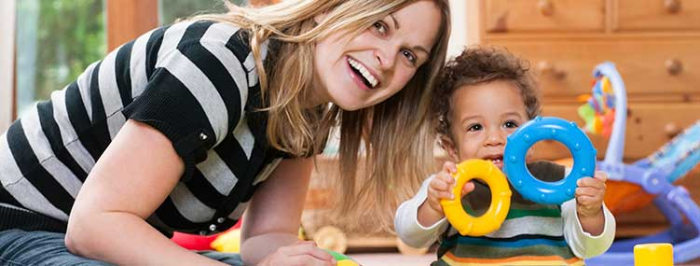Posted: August 25, 2014
Take advantage of your child’s “windows of motor development opportunity,” urge Carl Gabbard, Ed.D., and Luis Rodriques in an Early Childhood NEWS article entitled “Optimizing Early brain and Motor Development Through Movement.” This window of opportunity begins in the prenatal period and advances to the age of five. It is believed this timeframe is a critical period in which physical activity lays the foundation for not only motor control, but for early childhood development such as learning and behavior. In fact, behavioral functions are said to narrow considerably around the age of 10.
According to the article, new perspectives on early brain development suggest there are in excess of 100 billion neurons that make human behavior possible. These neurons link to form trillions of connections that are estimated to string 62,000 miles, if measured. Although it is believed that some wiring is programmed by one’s genetic blueprint, a more recent view is that unprogrammed connections are dependent upon environmental stimulation and experience to complete – and optimize – the brain’s architecture.
Movement and sensory experiences in early development are thought to strengthen and bond the neuron connections while inactivity or weakened activity prune away at neuron connection. Basically, if the neurons are used they become part of the framework; but if they are not used, they are lost.
According to the article, several research studies recommending exposing children to enriched settings that provide movement and sensory experiences, especially during certain key development phases. In addition, nature opens critical periods of opportunity that begin before birth and narrow as a child ages. In this period motor control, vision, language, feelings and more are developed.
Gabbard and Rodrigues have four recommendations for parents and early childhood teachers:
- Provide children with lots of sensory-motor experiences, especially visual-motor.
- Include basic gross-motor activities that involve postural control, coordination and locomotion.
- Combine movement activities with music.
- Abide by National Association for Sport and Physical Education, or NASPE, activity guidelines for infants, toddlers, and preschoolers from birth to five years of age.
In 1986, NASPE set out to identify educational standards in which to develop physically educated learners. In 1995, they published “Moving Into the Future: National Standards for Physical Education” which has been refined and revised since and widely used to train educators and to be used in the school environment.
In 2002, NASPE published “Physical Activity Guidelines for Infants, Toddlers, and Preschoolers. For more information on the Early Childhood NEWS article recommendations and movement activity ideas and guidelines for infants, toddler and preschoolers, visit “Optimizing Early Brain and Motor Development Through Movement.”
For more information on this topic and more:
Appropriate Practices in Movement Programs for Children Ages 3 to 5.
Adapted Physical Education National Standards
State School Health Policy Database
#CPInformation, #CPResearch, #MotorDevelopment
______
Source:
Gabbard, Ed.D., Carl and Luis Rodriques . “Optimizing Early Brain and Motor Development Through Movement,” Earlychildhood NEWS. Retrieved from “Optimizing Early Brain and Motor Development Through Movement.” Referenced online August 24, 2014.
______
Did you know?
Do you have an inside scoop on how to improve the life of an individual touched by Cerebral Palsy? If so, share with TheCPBlog® community!
At TheCPBlog®, we strive to be the ultimate blog for everything Cerebral Palsy! Come join, follow and share.






